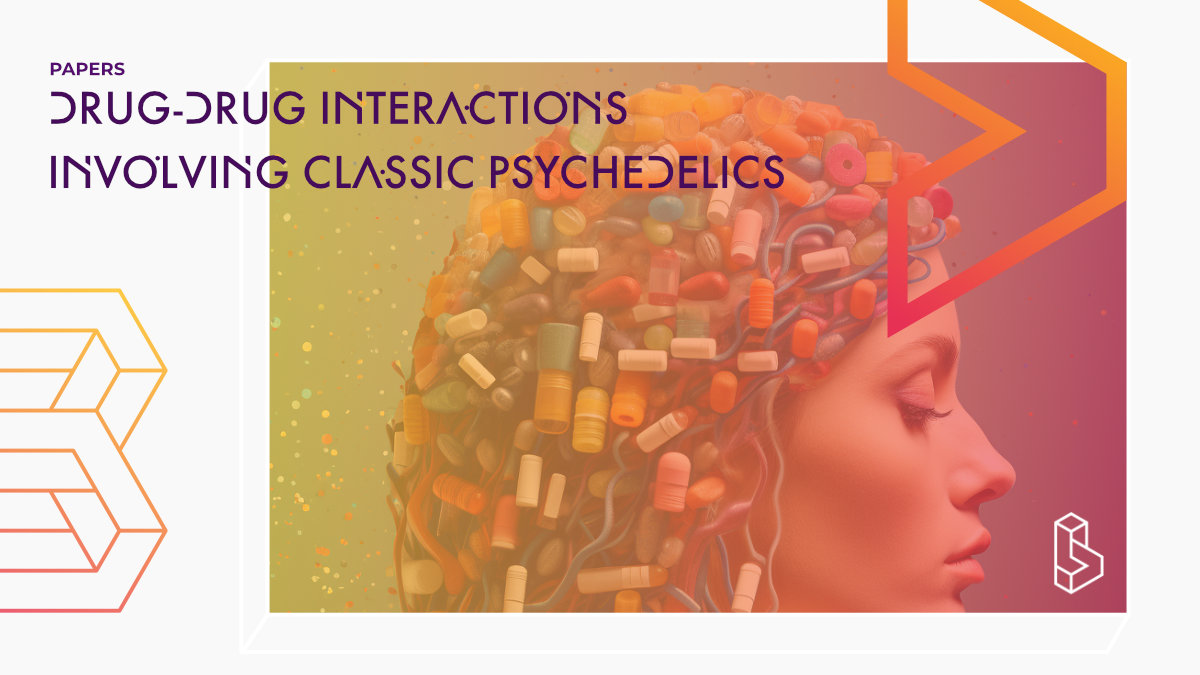This systematic review of 52 studies (n=7102) investigates drug-drug interactions between classic psychedelics (LSD, psilocybin, mescaline, DMT, 5-MeO-DMT, and ayahuasca) and various drugs, including antidepressants, antipsychotics, anxiolytics, mood stabilizers, and recreational drugs. The findings reveal diverse interactions, ranging from attenuated to potentiated effects, with a few cases reporting no changes. Despite a lack of serious adverse events in most studies, the review emphasizes the need for a comprehensive understanding of potential interactions and explores molecular pathways underlying observed effects.
Abstract of Drug-drug interactions involving classic psychedelics
“Classic psychedelics, including lysergic acid diethylamide (LSD), psilocybin, mescaline, N,N-dimethyltryptamine (DMT) and 5-methoxy-N,N-dimethyltryptamine (5-MeO-DMT), are potent psychoactive substances that have been studied for their physiological and psychological effects. However, our understanding of the potential interactions and outcomes when using these substances in combination with other drugs is limited. This systematic review aims to provide a comprehensive overview of the current research on drug-drug interactions between classic psychedelics and other drugs in humans. We conducted a thorough literature search using multiple databases, including PubMed, PsycINFO, Web of Science and other sources to supplement our search for relevant studies. A total of 7102 records were screened, and studies involving human data describing potential interactions (as well as the lack thereof) between classic psychedelics and other drugs were included. In total, we identified 52 studies from 36 reports published before September 2, 2023, encompassing 32 studies on LSD, 10 on psilocybin, 4 on mescaline, 3 on DMT, 2 on 5-MeO-DMT and 1 on ayahuasca. These studies provide insights into the interactions between classic psychedelics and a range of drugs, including antidepressants, antipsychotics, anxiolytics, mood stabilisers, recreational drugs and others. The findings revealed various effects when psychedelics were combined with other drugs, including both attenuated and potentiated effects, as well as instances where no changes were observed. Except for a few case reports, no serious adverse drug events were described in the included studies. An in-depth discussion of the results is presented, along with an exploration of the potential molecular pathways that underlie the observed effects.“
Authors: Andreas Halman, Geraldine Kong, Jerome Sarris & Daniel Perkins
Summary of Drug-drug interactions involving classic psychedelics: A systematic review
Introduction
Mescaline is a psychedelic compound found in cacti such as the peyote cactus, the San Pedro cactus, the Bolivian torch cactus and the leaf cactus. It has a high affinity for 5-HT1A and 5-HT2A/C receptors.
Pharmacokinetic drug-drug interactions (DDIs) include the inhibition of drug-metabolising enzymes, such as cytochrome P450, by concomitant drugs or circulating metabolites, and the potential for interaction with P-glycoprotein, a membrane transporter that facilitates the efflux of various drugs.
Find this paper
Drug-drug interactions involving classic psychedelics: A systematic review
https://doi.org/10.1177/02698811231211219
Open Access | Google Scholar | Backup | 🕊
Cite this paper (APA)
Halman, A., Kong, G., Sarris, J., & Perkins, D. (2023). Drug–drug interactions involving classic psychedelics: A systematic review. Journal of Psychopharmacology, 02698811231211219.

